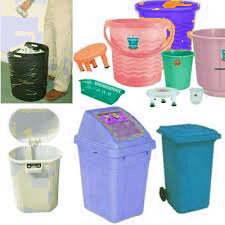|
 Rotational Moulds for Household Products Rotational Moulds for Household Products
|
|
|
|

Rotational Moulds for Household Products are made of various material, which includes steel, and is used for making containers and plastic boxes of different shapes, sizes and designs. On the other hand, Ice box moulds are fabricated using Grade-A raw material, and ice boxes using these moulds are used to store ice cream, perishable goods, fish, cold drinks and many more items. These products find varied usage during outings and many more. The Rotational Moulds for Household products gives the end-products its perfect and desired shape and size, which further finds varied usage as household items.
In the rotational molding process, the closed moulds are mounted on to the arm and are swinged into closed heating chambers, wherein forced and hot air keeps on circulating. The moulds keeps on rotating on its two perpendicular axis at a certain low speed depending upon the size of the moulds. In order to spread the loaded power in a uniform manner inside the surface of the moulds, the moulds are meant to rotate in the aforementioned two axis. After that, the moulds are subjected to heat with the help of hot forced air into the chamber. This makes the product inside the moulds to fuse after heating and it forms a uniform layer inside the mould.
Raw Material Needed for Household Products Moulds:
Generally, LLDPE is used as the raw material is used, which has the density of 0.930 to 0.936 gms/ Cm cube, and the melt flow index lies in the range of 3 to 6 gm per 10 minutes. In order to produce good quality end-products through rotomolding, the material should posses the following characteristics:
- Mechanical Strength should be very high
- The material should be stable when subjected to a wide range of cycle time and temperature
- Excellent resistant power against warpage
- There should be consistency in Shrankage, which must at-least 2.5 % or bit more than that.
- High Environmental stress crack resistance

|
 |
|
|
|
|
